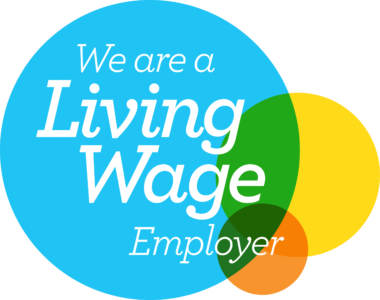The background
In 2024 and 2025, two cases were brought before the courts that raised the question: how can a Royal Charter charity amend its objects when there is no power of amendment in the Royal Charter?
Royal Charter charities are bodies corporate formed by Royal Charter granted by the Sovereign on the advice of the Privy Council. They are not companies subject to company law, and they are not trusts subject to trust law. They are governed by their Royal Charter and any byelaws. This makes them relatively rare entities, even in the charity world!
As with any charity, a Royal Charter charity can only operate in furtherance of its charitable objects for the public benefit. That means that the charity cannot use its charitable funds for activities that are not in furtherance of the objects. It is therefore important that the trustees of the charity can easily understand the objects, and that the charity has objects that accurately reflect the activities of the charity.
The cases were brought by The Keepers and Governors of the Possessions, Revenues and Goods of the Free Grammar School of John Lyon, Within the Town of Harrow-on-the-Hill (the Charity), which is the charity that runs Harrow School and The John Lyon School, in Harrow-on-the-Hill.
Harrow School was founded by Royal Charter granted by Queen Elizabeth I in 1572. The Royal Charter includes objects which are in Latin, but when translated, included “that for ever hereafter there shall be one Grammar School in the Village of Harrow-on-the-Hill … which shall be called the Free Grammar School of John Lyon, for the bringing up, teaching and instruction of Children and Youth in Grammar, for all time hereafter coming”.
Harrow School wanted to understand whether it was limited to using the Charity’s funds to support a school in Harrow, or whether they could expand their activities to support other schools in the UK and establish Harrow branded schools outside of the UK. Harrow School was already operating a system whereby overseas schools were licensed to use the Harrow School name, but that scheme was carried out by the Charity’s ’s trading subsidiary, not by the Charity.
The 2024 case
In 2024 the Charity asked the court for a cy-près scheme to amend the objects and for a declaration that the Governors have the power under the Public Schools Act 1868 to amend the objects further in the future. The Charity wanted objects written in English that were not limited geographically.
Cy-près is the court’s inherent jurisdiction to make schemes changing the objects for which charitable assets are held. It can only be used if a cy-près occasion has arisen.
The court first had to establish which objects were applicable to Harrow School. Various Public Schools Acts in the 1800s established a new governing body for Harrow School to act in place of the original corporation established under the 1572 Royal Charter. The entire undertaking was transferred to the new governing body (the Charity) in 1874 as custodian of the property dedicated to the charitable purposes set out in the 1572 Charter.
The judge held in his first judgment that Harrow School’s objects were those set out in the 1572 Royal Charter, and both parties to the proceedings agreed that these are still the objects of the Charity. The objects of Harrow School had also been considered in an earlier case from 1810, AG v Earl of Clarendon, where it had been determined that the correct interpretation of the 1572 Charter was that the object was the “perpetual sustentation” of the school in Harrow. The Charity is therefore required to use its funds to support the purpose of the school, not education more widely and not for the benefit of the youth of the parish. Activities could take place outside of Harrow, but only if they were for the benefit of the School in Harrow.
As explained above, the court has an inherent jurisdiction to make a scheme to change the purposes of a charity, but the court will only exercise that jurisdiction where a cy-près occasion has arisen. The claimant argued that the objects of the Charity provided “a use for only part of the property available by virtue of the gift”, arguing that the intellectual property of the Charity had not been fully exploited. The court rejected this argument, noting that the brand was already being exploited, albeit via the trading subsidiary.
The court reaffirmed that it will not exercise its inherent jurisdiction in a way which conflicts with the provisions of an Act of Parliament or Royal Charter, as these are treated as a higher authority and not to be interfered with by the courts unless that interference is itself authorised by the Act of Parliament or Royal Charter; rather, the courts will only make a scheme which aids the statute or charter or supplements it (the “higher authority principal”). As such, the court was unable to make a scheme to amend the objects of the Charity.
The court also dismissed the argument that the Public Schools Acts of the 1800s conferred authority on the Governors to amend the objects of a Royal Charter charity.
The 2025 case
If, as explained above, the charitable objects of Harrow School are set out in the 1572 Charter, and there is no mechanism to amend those objects either by using the Public Schools Act 1868 (which does not apply to the Charter but only to statutes made under that Act) or by requesting the court to make a cy-près scheme (since a cy-près occasion has not arisen), then by what mechanism would Harrow School to be able to amend its objects in the future?
This question was considered by the judge in a second judgment in April 2025, together with the more general question of whether the court’s jurisdiction enabled it to make a cy-près scheme in respect of the charity’s objects under the new s.75ZA of the Charities Act 2011 (inserted by the Charities Act 2022).
Firstly, the judge considered the court’s scheme-making powers under s.68 of the Charities Act 2011. That provision allows the court to make a cy-près scheme for charities governed by a Royal Charter even if the charter needs to be amended for the scheme to take effect. In addition, the scheme will only take effect once approved by the King at a meeting of the Privy Council (i.e. the scheme is subject to an “Order in Council”).
Secondly, the judge noted that the Charities Act 2022 had introduced a new power (now s.280C of the Charities Act 2011) for charities governed by a Royal Charter to amend their charters even if there is no power within the charter, provided they are satisfied it is in the best interests of the charity to do so and, again, such an amendment would be conditional upon and subject to an Order in Council.
In deciding whether s.68 and s.280C applied, the judge considered the background of the Charity and whether it continued to be regulated by Royal Charter.
The 1572 Charter declared the original charitable purposes of Harrow School and created a charity. Following case law dating back to the 1970s and approved as recently as 2022 by the Supreme Court, the judge held that the original corporation created by the 1572 Charter held its assets subject to a binding obligation that they be applied only for the charitable objects of the Royal Charter; the corporation was effectively a custodian of those assets and regardless of what might subsequently happen to the corporation, the assets could never be applied for any other purpose without the intervention of the monarch, parliament or the court.
Therefore, whilst the Public Schools Act 1868 and a statutory scheme dated 1874 transferred the original corporation’s undertaking to a new corporate body, in essence, this simply changed the custodian of the assets, much like changing a trustee of an unincorporated charity, and had no effect on the purpose (or “trusts”) for which those assets were held. As the judge put it, “at no point did the property of the Original Corporation cease to be held for the charitable objects set out in the Royal Charter”.
As a result, the new corporate body continued to hold Harrow School’s assets for the charitable purposes set out in the 1572 Charter and, therefore, in principle s.68 and s.280C of the Charities Act 2011 were both available as mechanisms by which those charitable purposes might be amended.
Regarding the question whether the new power of the court or the Commission to make a scheme under s.75ZA of the Charities Act 2011 in relation to corporate charities did away with the “higher authority” principle (explained above), the judge held it did not.
He confirmed that the new power simply removed any remaining uncertainty as to the court’s and Commission’s scheme-making powers “in relation to” corporate charities (i.e. charities that are not trusts). This did not abolish the higher authority principle, but the courts were still required to exercise their scheme-making powers under s.68 in such a way as not to conflict with or override the Act of Parliament or a Royal Charter, but rather to supplement it.
The Birketts’ view
The higher authority principle limits the court’s power to amend the objects of charities established by Royal Charter or Acts of Parliament.
There are mechanisms available to Royal Charter charities to amend their objects, but such amendments will be subject to approval by the Privy Council, and trustees cannot make such amendments unilaterally.
If you are a trustee of a Royal Charter charity and you are looking to update your governance, please contact a member of our charities team for further advice.
The content of this article is for general information only. It is not, and should not be taken as, legal advice. If you require any further information in relation to this article please contact the author in the first instance. Law covered as at September 2025.









